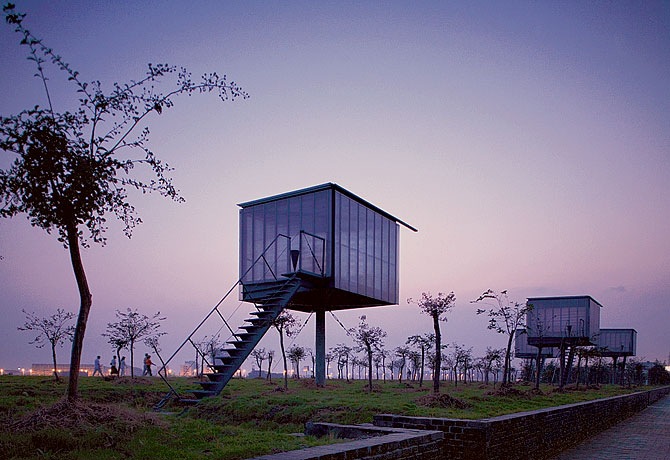
Light Refreshment: Liu Jiakun's translucent teahouses at Jinhua
Jinhua, a city of 4.5 million souls three hours by car southwest of Shanghai, is best known in China for its dry-cured ham. But it could soon become famous for something of a rather different flavor. Last October, Beijing conceptual artist Ai Weiwei and a group of city officials cut the ribbon on the Jinhua Architecture Park, a collection of 17 pavilions designed by Chinese and international architects, set on the banks of the Yiwu River.
Before it became a staple of European gardens and world expos, the pavilion — a small building for repose and reflection — was a key component of refined Chinese landscape design, as depicted in many traditional paintings. At Jinhua, however, its forms and functions have been radically updated. The Swiss firm of Herzog & de Meuron has built something resembling a futuristic jungle gym. Mexican architect Fernando Romero has fashioned a bridge that doubles as a teahouse. A cluster of concrete outhouses by artist Wang Xingwei and architect Xu Tiantian seems to double as brutalist sculpture.
By incorporating aesthetically striking yet functional buildings into a natural environment, the park not only champions progressive design but reminds visitors of the importance of setting aside land for open space — something that is being forgotten in China's building boom. "It shows the world we can accept brand new ideas," one city official says. Adds leading architecture professor Zhi Wenjun, "In terms of its impact on society, culture and design, this is one of the most important events in the history of architecture in China." That ought to be enough to convince design buffs to pay a visit. Tel: (86-579) 8246 9527 (in Mandarin only)